In the exciting world of photography, where light tells stories, Nikon Low Light Cameras are like the wizards of darkness. Come along as we discover the Top Picks that totally change how we see low-light photography, making moments shine beautifully. Imagine a place where shadows turn into a canvas and Nikon Low Light Cameras are the magical brushes.
What is low-light photography?
Low-light photography refers to the practice of capturing images in conditions where the available light is minimal or subdued. This often includes situations such as indoors or during nighttime, where the lighting is not as bright as during daylight hours. Low-light photography can produce unique and dramatic effects, showcasing scenes, subjects, and details that might not be as visible under normal lighting conditions.
Here are a few examples of low-light photography:
- Nightscapes: Capturing the beauty of a city skyline, a starry night sky, or a serene landscape under the moonlight.
- Astrophotography: Taking pictures of celestial objects like stars, planets, and galaxies using long exposures to reveal their intricate details.
- Indoor Events: Photographing concerts, performances, or parties where the lighting is dim, creates an atmospheric mood.
- Candlelit Scenes: Showcasing the warm and cozy ambiance of scenes lit by candles or soft, ambient lighting.
- Street Photography: Documenting the urban environment during the evening hours, capturing the vibrancy and character of nighttime life.
- Portrait Photography: Creating intimate and dramatic portraits using a single light source, like a lamp or a window, for a moody effect.
- Light Painting: Experimenting with long exposures and various light sources to “paint” or draw patterns and designs in the air.
- Silhouettes: Using backlighting to capture striking silhouettes of subjects against a low-lit background.
- Fireworks: Shooting fireworks displays during nighttime events, capturing their brilliant colors against the dark sky.
- Long Exposures: Creating dreamy and ethereal images by using long exposure times, allowing moving elements like water or traffic to create a sense of motion and blur.
- Aurora Photography: Photographing the stunning natural phenomenon of the Northern or Southern Lights in dark and remote locations.
Low light photography often requires specialized techniques and equipment, such as a high resolution and wide ISO range camera, tripods to stabilize the camera during longer exposures, and lenses with wider apertures to allow more light into the sensor. It can produce captivating and visually striking images that evoke different emotions and moods compared to photographs taken in well-lit conditions.

Image by David Mark from Pixabay
Choosing the Right Nikon Low Light Camera: Key Factors to Consider
When you’re aiming to capture the enchantment of low-light settings, you can rely on Nikon Low Light Cameras as your steadfast companions. With a variety of options at hand, how do you go about selecting the perfect Nikon Low Light Camera that resonates with your creative vision? Let’s explore some essential elements that play a pivotal role in guiding your well-informed choice.
-
Sensor Sensitivity and Size
At the core of every camera lies its sensor, holding the secret to remarkable low-light performance. As you delve into the world of Nikon Low Light Cameras, take special note of sensor size. A larger sensor translates to a greater surface area for light capture, resulting in clearer and more intricate images even when light is scarce. Full-frame sensors stand as the largest, followed by APS-C sensors and micro four-thirds sensors.
-
ISO Performance
ISO, the gauge of a camera’s responsiveness to light, wields a transformative influence in low-light photography. Nikon Low Light Cameras with outstanding ISO performance offer you the flexibility to navigate diverse lighting conditions without compromising image quality.
The higher the sensor sensitivity or ISO range, the better the camera’s ability to seize those delicate light nuances in dimly illuminated settings.
So, opt for a camera boasting an expansive ISO range. This empowers you to elevate the ISO in dim scenarios, capturing well-exposed shots while keeping unwanted noise or grain at bay. The result? Clear, noise-free images that eloquently narrate your low-light tales.
-
Image Stabilization
Low light environments often necessitate longer exposure durations, raising the potential for blurriness caused by camera shake. This is where image stabilization comes into play, a feature that can make a significant difference. Nikon Low Light Cameras furnished with advanced image stabilization technology counteract camera shake, granting you the ability to shoot handheld confidently in low light situations.
-
Autofocus Performance
Achieving precise and rapid autofocus can be a challenge in low-light conditions. Seek out Nikon Low Light Cameras equipped with sophisticated autofocus systems utilizing technologies like phase detection and contrast detection. These systems can lock onto subjects even in subdued lighting, guaranteeing your shots are crisp and well-focused.
-
Special Low Light Shooting Modes
Certain Nikon Low Light Cameras present specialized shooting modes tailored for low light scenarios. These modes often optimize settings such as ISO, aperture, and shutter speed to deliver optimal outcomes in demanding lighting conditions. Exploring cameras that feature dedicated low-light modes can streamline your shooting process and enhance your results.
-
Lens Compatibility and Availability
Remember, the camera body is merely a part of the puzzle; your choice of lens holds equal significance. Nikon’s array of lenses includes options tailored specifically for low-light photography, featuring wide apertures and advanced optical technologies. Confirm that the Nikon Low Light Camera you opt for boasts a broad selection of compatible lenses, catering to your creative requirements.
By taking these factors into account, you’ll be well-equipped to select a Canon Low Light Camera that empowers you to capture the magic of low-light moments with finesse and brilliance.

Image by Quang Le from Pixabay
Top Nikon Low Light Cameras
1. Mirrorless Canon cameras
Nikon Z7 II

Key Features
- 45.7MP FX-Format BSI CMOS Sensor
- Dual EXPEED 6 Image Processors
- UHD 4K60 Video; N-Log & 10-Bit HDMI Out
- 10 fps Cont. Shooting, ISO 64-25600
- 493-Point Phase-Detect AF System
- 3.6m-Dot OLED Electronic Viewfinder
- 3.2″ 2.1m-Dot Tilting Touchscreen LCD
- 5-Axis In-Body Vibration Reduction
- Dual Memory Card Slots
The Nikon Z7 II is a high-performance mirrorless camera that combines cutting-edge technology with exceptional versatility. Building upon its predecessor’s success, the Z7 II offers photographers and enthusiasts an enhanced experience with its impressive features. Boasting a robust 45.7-megapixel full-frame sensor, the camera delivers stunning image quality and remarkable details, even in challenging lighting conditions.
Its dual EXPEED 6 image processors contribute to faster performance, improved autofocus, and heightened burst shooting capabilities. The Z7 II excels in low-light situations, thanks to its expanded ISO range and effective in-body image stabilization.
Additionally, its 4K video recording capabilities, high-resolution electronic viewfinder, and tilting touchscreen provide a seamless blend of creative freedom and user-friendly control. With its blend of cutting-edge technology and ergonomic design, the Nikon Z7 II stands as a versatile tool for photographers seeking top-tier performance in a compact mirrorless body.
Nikon Z6 II

Key Features
- 24.5MP FX-Format BSI CMOS Sensor
- Dual EXPEED 6 Image Processors
- UHD 4K30 Video; N-Log & 10-Bit HDMI Out
- 14 fps Cont. Shooting, ISO 100-51200
- 273-Point Phase-Detect AF System
- 3.6m-Dot OLED Electronic Viewfinder
- 3.2″ 2.1m-Dot Tilting Touchscreen LCD
- 5-Axis In-Body Vibration Reduction
- Dual Memory Card Slots
The Nikon Z6 II is a versatile and advanced mirrorless camera designed to meet the demands of both photography and videography enthusiasts. With a 24.5-megapixel full-frame sensor, the Z6 II delivers impressive image quality and excellent low-light performance.
Its dual EXPEED 6 image processors enhance speed, autofocus accuracy, and continuous shooting capabilities, making it ideal for capturing fast-paced action. The in-body image stabilization system further aids in obtaining sharp results, even in challenging shooting conditions.
The camera excels in video production, offering 4K UHD recording with full-pixel readout and a variety of frame rates. A high-resolution electronic viewfinder and tilting touchscreen provide intuitive control and composition options.
Whether you’re a dedicated photographer or a content creator, the Nikon Z6 II offers a blend of powerful features and user-friendly design for creative excellence.
Nikon Z5

Key Features
- 24.3MP FX-Format CMOS Sensor
- EXPEED 6 Image Processor
- UHD 4K and Full HD Video Recording
- 3.6m-Dot OLED Electronic Viewfinder
- 3.2″ 1.04m-Dot Tilting Touchscreen LCD
- 5-Axis Sensor-Shift Vibration Reduction
- ISO 100-51200, Up to 4.5 fps Shooting
- Built-in Wi-Fi and Bluetooth
- Dual SD UHS-II Card Slots
The Nikon Z5 is a well-rounded and accessible full-frame mirrorless camera designed for enthusiasts and aspiring photographers. With a 24.3-megapixel sensor, the Z5 delivers impressive image quality, capturing intricate details and vibrant colors.
Its powerful EXPEED 6 image processor ensures fast performance, accurate autofocus, and a continuous shooting speed of up to 4.5 frames per second. The camera’s built-in image stabilization system contributes to sharper shots, particularly in low-light conditions.
The Z5 is also capable of recording 4K UHD videos, making it suitable for multimedia projects. Its lightweight yet sturdy construction, along with a comfortable grip, ensures easy handling during extended shooting sessions.
A high-resolution electronic viewfinder and tilting touchscreen enhance compositional flexibility and user-friendly navigation. The Nikon Z5 strikes a balance between performance and accessibility, making it an excellent choice for those looking to step up their photography game.
Nikon Z50

Key Features
- 20.9MP DX-Format CMOS Sensor
- EXPEED 6 Image Processor
- UHD 4K and Full HD Video Recording
- 2.36m-Dot OLED Electronic Viewfinder
- 3.2″ 1.04m-Dot 180° Tilting Touchscreen
- ISO 100-51200, up to 11-fps Shooting
- 209-Point Hybrid AF, Eye Detection
- Built-In Wi-Fi and Bluetooth
- NIKKOR Z DX 16-50mm f/3.5-6.3 VR Lens
- NIKKOR Z DX 50-250mm f/4.5-6.3 VR Lens
The Nikon Z50 is a compact and capable mirrorless camera designed to empower photographers with creative freedom. Equipped with a 20.9-megapixel APS-C sensor, the Z50 delivers impressive image quality and sharpness.
Its EXPEED 6 image processor ensures fast performance, responsive autofocus, and a rapid continuous shooting speed of up to 11 frames per second. The camera’s compact form factor and user-friendly controls make it ideal for travel and casual photography.
The Z50 features a high-resolution electronic viewfinder and a tilting touchscreen, offering versatile composition options. With 4K UHD video recording capabilities, vloggers and content creators can capture high-quality video content.
The Z50 is compatible with a range of NIKKOR Z lenses, further expanding creative possibilities. Offering a blend of portability and advanced features, the Nikon Z50 is a versatile mirrorless option for photography enthusiasts looking to capture stunning visuals with ease.
Comparison of Nikon Mirrorless Cameras
Below is a comparison table of the above-mentioned Nikon mirrorless cameras regarding their low-light features:
| Feature | Nikon Z7 II | Nikon Z6 II | Nikon Z5 | Nikon Z50 |
|---|---|---|---|---|
| Sensor type | Full-frame CMOS | Full-frame CMOS | Full-frame CMOS | APS-C CMOS |
| Sensor resolution | 45.7 megapixels | 24.5 megapixels | 24.3 megapixels | 21.1 megapixels |
| ISO range | 64-25600 (expandable to 50-102400) | 100-51200 (expandable to 50-204800) | 100-51200 (expandable to 50-204800) | 100-51200 (expandable to 100-25600) |
| In-body stabilization | yes | yes | yes | No |
| Autofocus performance | Excellent | Excellent | Good | Good |
| Special low light mode | Yes | Yes | No | No |
| Lens compatibility | All Z lenses | All Z lenses | All Z lenses | Z DX lenses |
In conclusion, when considering Nikon mirrorless cameras for low-light photography, each model offers distinct advantages. The Nikon Z7 II and Z6 II stand out with their full-frame sensors, wide ISO ranges, and in-body image stabilization, making them formidable choices for capturing exceptional images in challenging lighting. Their advanced autofocus systems and special low-light modes further enhance their low-light performance.
The Nikon Z5, while sharing similar capabilities in terms of ISO range and in-body stabilization, offers an accessible entry point into full-frame photography. It presents a solid option for those seeking reliable low-light performance and the benefits of a full-frame sensor.
For enthusiasts interested in a more compact form factor, the Nikon Z50 with its APS-C sensor and capable low-light autofocus system offers a lightweight option, though lacking in in-body image stabilization and specialized low-light shooting modes.
2. DSLR Nikon cameras
Nikon D850

Key Features
- 45.7MP FX-Format BSI CMOS Sensor
- EXPEED 5 Image Processor
- 3.2″ 2.36m-Dot Tilting Touchscreen LCD
- 4K UHD Video Recording at 30 fps
- Multi-CAM 20K 153-Point AF System
- Native ISO: 64-25600, Extended: 32-102400
- 7 fps Shooting for 51 Frames with AE/AF
- 8K Time-Lapse, Negative Digitizer Mode
- 180k-Pixel RGB Sensor, Focus Shift Mode
- SnapBridge Bluetooth and Wi-Fi
The Nikon D850 stands as a flagship DSLR camera, renowned for its exceptional imaging capabilities and versatile performance. With a remarkable 45.7-megapixel full-frame sensor, the D850 produces stunningly detailed images and offers impressive dynamic range.
Its EXPEED 5 image processor ensures swift performance, rapid autofocus, and a continuous shooting rate of up to 7 frames per second, or 9 frames per second with an optional battery grip. The camera’s native ISO range of 64-25,600 provides excellent low-light performance. The D850 excels in both photography and videography realms, supporting 4K UHD video recording and time-lapse capabilities.
Its tilting touchscreen and high-resolution optical viewfinder enhance intuitive control and precise composition. The rugged build and weather-sealing make it well-suited for various shooting conditions. The Nikon D850 remains a versatile and powerful tool, catering to professional photographers and enthusiasts seeking uncompromising image quality and performance.
Nikon D780

Key Features
- 24.5MP FX-Format BSI CMOS Sensor
- EXPEED 6 Image Processing Engine
- UHD 4K30 Video; N-Log & 10-Bit HDMI Out
- Multi-CAM 3500 II 51-Point AF System
- 273-Point Hybrid AF with Eye Detection
- 3.2″ 2.36m-Dot Tilting Touchscreen LCD
- 7 fps Shooting, 12 fps in Live View
- Extended ISO 50-204800
- Built-In Wi-Fi and Bluetooth
- 180k-Pixel RGB Sensor Exposure Metering
The Nikon D780 is a dynamic and versatile DSLR camera that seamlessly bridges the gap between traditional photography and modern technology. Featuring a 24.5-megapixel full-frame sensor and an EXPEED 6 image processor, the D780 delivers exceptional image quality, superb dynamic range, and improved low-light performance.
With a continuous shooting speed of 7 frames per second and enhanced autofocus capabilities, it excels in capturing fast-moving subjects. The camera supports 4K UHD video recording, offering both full-frame and cropped shooting modes for creative flexibility.
Its tilting touchscreen and optical viewfinder provide intuitive control and precise composition. The D780 retains the ergonomic familiarity of a traditional DSLR while incorporating modern features like in-camera Wi-Fi and Bluetooth connectivity. Whether you’re a photographer or videographer, the Nikon D780 offers a well-rounded and adaptable toolset for capturing remarkable visuals in various shooting scenarios.
Nikon D7500

Key Features
- 20.9MP DX-Format CMOS Sensor
- EXPEED 5 Image Processor
- 3.2″ 922k-Dot Tilting Touchscreen LCD
- 4K UHD Video Recording at 30 fps
- Multi-CAM 3500FX II 51-Point AF System
- Native ISO 51200, Expanded ISO 1,640,000
- 8 fps Shooting for Up to 100 Frames
- SnapBridge Bluetooth and Wi-Fi
- 180k-Pixel RGB Sensor and Group Area AF
The Nikon D7500 is a powerful DX-format DSLR camera designed to deliver impressive performance and creative versatility. Featuring a 20.9-megapixel sensor and an EXPEED 5 image processor, the D7500 offers excellent image quality, quick processing, and enhanced low-light capabilities.
With a continuous shooting speed of up to 8 frames per second, it excels at capturing fast-action moments. The camera’s 51-point autofocus system ensures accurate subject tracking and focus.
The D7500 is also equipped with 4K UHD video recording, providing crisp and detailed video content. Its tilting touchscreen and optical viewfinder contribute to easy composition and intuitive control. Built with durability in mind, the camera boasts a weather-sealed body for shooting in challenging conditions.
The Nikon D7500 is a versatile and capable option for enthusiasts and photographers seeking a blend of high-quality stills and video performance in a compact and ergonomic design.
Nikon D500

Key Features
- 20.9MP DX-Format CMOS Sensor
- EXPEED 5 Image Processor
- 3.2″ 2,539k-Dot Tilting Touchscreen LCD
- 4K UHD Video Recording at 30 fps
- Multi-CAM 20K 153-Point AF System
- Native ISO 51200, Extend to ISO 1640000
- 10 fps Shooting for Up to 200 Frames
- Built-In Wi-Fi, Bluetooth and NFC
- In-Camera Time Lapse, Up to 9999 Frames
- DX NIKKOR 16-80mm f/2.8-4E ED VR Lens
The Nikon D500 is a robust DX-format DSLR camera renowned for its professional-grade features and exceptional performance. With a 20.9-megapixel sensor and an EXPEED 5 image processor, the D500 offers superb image quality, rapid processing, and excellent low-light capabilities.
Boasting a remarkable 153-point autofocus system, it delivers precise subject tracking and focus accuracy, making it ideal for capturing fast-paced action. The camera’s impressive 10 frames per second continuous shooting speed further enhances its versatility.
Additionally, the D500 supports 4K UHD video recording, providing high-quality video content. Its tilting touchscreen and optical viewfinder contribute to seamless composition and intuitive control.
Built to withstand rugged conditions, the camera features a durable magnesium alloy body with weather sealing. The Nikon D500 stands as a professional-grade DSLR choice for photographers seeking advanced features and top-tier performance in a compact and robust design.
Comparison of DSLR Nikon Cameras
Below is a comparison table of the above-mentioned Nikon DSLR cameras regarding their low-light features:
| Feature | Nikon D850 | Nikon D780 | Nikon D7500 | Nikon D500 |
|---|---|---|---|---|
| Sensor type | Full-frame CMOS | Full-frame CMOS | APS-C CMOS | APS-C CMOS |
| Sensor resolution | 45.7 megapixels | 24.5 megapixels | 20.9 megapixels | 20.7 megapixels |
| ISO range | 64-25600 (expandable to 32-102400) | 100-51200 (expandable to 50-204800) | 100-51200 (expandable to 50-204800) | 100-51200 (expandable to 100-25600) |
| Vibration reduction | Yes (5 stops) | Yes (5 stops) | No | No |
| Autofocus performance | Excellent | Excellent | Good | Excellent |
| Special low light mode | Yes | Yes | No | No |
| Lens compatibility | All F-mount lenses, select Z-mount lenses | All F-mount lenses, all Z-mount lenses | All F-mount lenses | All F-mount lenses |
As you can see, all four cameras have good low-light performance, thanks to their large sensors and high ISO ranges. The Nikon D850 has the best low-light performance overall, thanks to its higher resolution sensor and wider ISO range. The Nikon D780 is also a good option for low-light photography, and it has the advantage of being compatible with all F-mount lenses, including older manual focus lenses. The Nikon D7500 and D500 are both good cameras for low-light photography, but they are not quite as good as the D850 or D780.
In terms of autofocus performance, all four cameras are excellent. They all have 51-point phase-detection autofocus systems that can track subjects accurately in low-light conditions. The Nikon D850 and D780 also have a special low-light mode that can help them focus in even darker conditions.
Finally, all four cameras are compatible with all F-mount lenses. However, the Nikon D780 and D850 are also compatible with all Z-mount lenses, which are designed specifically for full-frame cameras.
Ultimately, the best camera for low-light photography depends on your individual needs and budget. If you need the best possible low-light performance, then the Nikon D850 is the best choice. If you are on a budget, then the Nikon D7500 is a good option. And if you are looking for a camera that can also take good photos in other conditions, then the Nikon D500 is a good choice.
Related posts
Best Low Light Video Camera – The Top Ten
Night Vision – The Best Low Light Point And Shoot Cameras
Tips For Taking Good Photos At Low Light Condition
How To Shoot Videos Like A PRO In A Low Light Condition
Thanks for reading, I hope you enjoyed the article, in case you have any questions just drop them below & I will be happy to answer you.
The featured Image by kordula vahle from Pixabay
If you enjoy the site, don’t forget to subscribe, we will only inform you when a new article is posted.

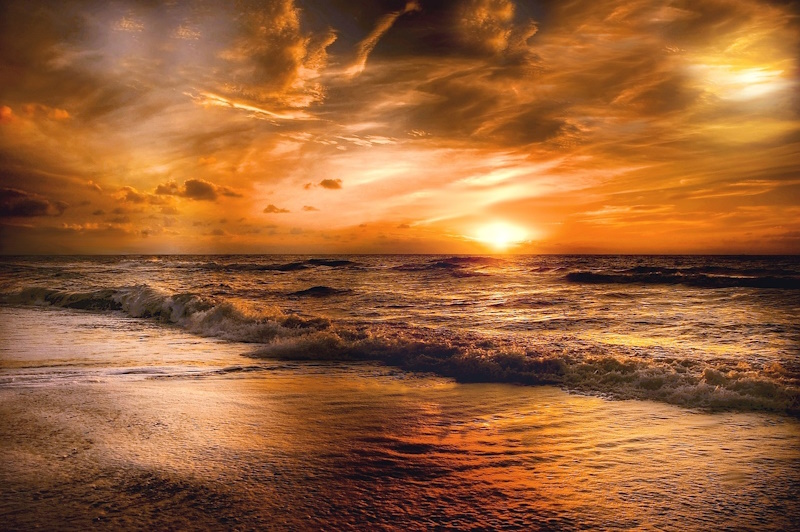





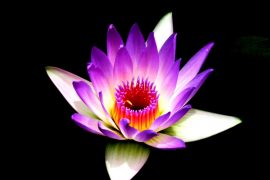
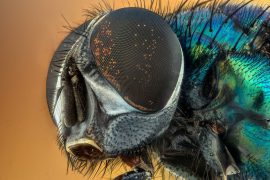
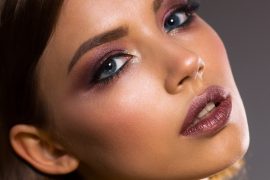
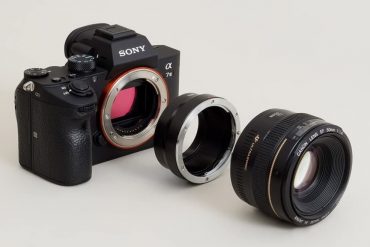
Hey, your guide on the best low light Nikon cameras is a valuable resource for photographers seeking to capture stunning moments in challenging lighting conditions. I’m in the market for a camera that excels in low light, but I wonder if you have any insights into the specific lenses that pair well with these Nikon cameras for low light photography? Additionally, do you have a personal favorite among the cameras listed, and if so, what features make it stand out for capturing those breathtaking low light moments?
I’m glad to hear that you found the guide on low-light Nikon cameras valuable! When it comes to pairing lenses for low-light photography, prime lenses with wide apertures (e.g., f/1.4 or f/1.8) are often a great choice, as they allow more light to enter the camera. Specific lens choices may depend on your photography style and preferences, whether you prefer a wide-angle, standard, or telephoto lens.
As for my personal favorite among the cameras listed in my guide, I would say the Nikon Z6 II. It has a full-frame sensor, which gives it better low-light performance than the other cameras listed. It also has a fast autofocus system, which is important for low-light photography. Additionally, it has in-body image stabilization, which is helpful for reducing camera shake. I hope this helps!
This article is a great read. Outlining what a low light photograph is, and defining certain aspects you need to think about when purchasing a camera for this certain style of photography. There is then a great range of options to look from and choose. Giving you details of all the cameras so you can pick one which best suits your needs.
Which camera would you use to capture low light photographs?
I’m glad you found my article helpful.
I would use the Nikon Z6 II to capture low-light photographs. It has a full-frame sensor that allows it to capture more light than a crop sensor camera, resulting in less noise in low-light conditions. It also has a high ISO range and in-body image stabilization, which helps to reduce camera shake.
Here are some of the other features that make the Nikon Z6 II a great camera for low-light photography:
Fast autofocus system: This is important for capturing sharp images in low light conditions, where subjects are moving quickly or erratically.Wide dynamic range: This allows you to capture more detail in both the shadows and highlights of your images, even in challenging lighting conditions.High-quality image sensor: This produces sharp, detailed images with accurate colors.Low-light noise reduction: This helps to reduce the appearance of noise in your images, even when shooting at high ISOs.
If you’re looking for a great camera for low light photography, the Nikon Z6 II is a great option. It’s a versatile camera that can handle a variety of photography tasks, and it’s sure to produce stunning images in even the darkest conditions.
I hope this helps!